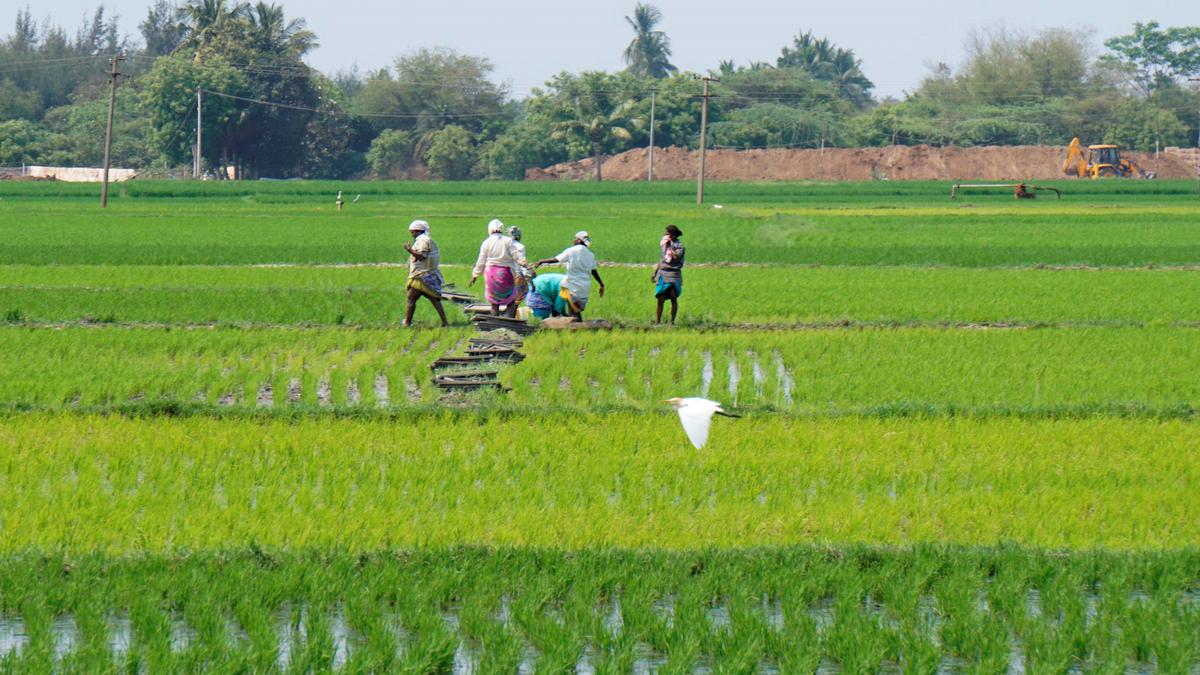Women farm workers transplant paddy at an agricultural field at Pathukannu near Puducherry, April 09, 2020.
| Photo Credit: Kumar S.S./The Hindu
Land-holding farmers who engage in non-farming activity tend to improve labour efficiency on their farms, a recent study has found.
The study aimed to understand the impact of multiple job holding on farm labour use efficiency. The researchers used data from the International Crop Research Institute for Semi-Arid Tropics (ICRISAT) of farmers from States such as Odisha, Maharashtra, Telangana, Andhra Pradesh, Bihar, Jharkhand, Karnataka, and Madhya Pradesh for the period between 2010 and 2014.
“This is important as participation in non-farm activities alters farmers’ labour allocation decisions between farm and non-farm activities,” the researchers said in their paper.
The data came from the Village Dynamics in South Asia Project. The researchers adopted data envelopment analysis to estimate labour use efficiency. This is a mathematical technique that compares the efficiency of multiple workers doing the same kind of task without having to get into exactly how they do it.
Anviksha Drall, assistant professor of economics at the National Law School of India University, Bengaluru and Sabuj Kumar Mandal, associate professor in the Department of Humanities and Social Sciences at IIT-Madras, conducted the study.
Their article ‘Does multiple job holding raise labour use efficiency of the farm operators? Evidence from rural India?’, was published in the peer-reviewed journal Applied Economics.
The researchers found that when farmers migrated, either within their State or outside, they gained new knowledge about farm practices that they applied to their farms when they returned. Often, farmers had time on their hands after sowing seeds. In the intervening months, their family carried on the agricultural work. Large farmers with financial wherewithal hired labour to work in their absence, Mr. Mandal said.
Ms. Drall said, “The study recommends promoting structured non-farm employment opportunities in rural areas to maximise positive spillover effects on farming.”
Mr. Mandal added: “Farming is becoming riskier because of climatic shock and price fluctuation. Farmers are diversifying into non-farm activities, either by starting a family occupation such as carpentry; craftsmanship or a saloon, or they migrate. When they migrate, they learn how farmers in other states are doing their farming activities and use of technology.”
The migration and multiple job holding help in two ways: to invest in new farming practices and improve labour efficiency. “We argue that instead of concentrating only on farming you can diversify into non-farming activities,” Mr. Mandal explained.
“But to start a business you need money. Farmers face credit constraints. Therefore, we suggest that governments should come in and help farmers to diversify in non-farming activity,” he added.
The researchers said they deliberately selected data from villages from semi-arid and humid tropics in the country. Households were chosen randomly based on village listing in each selected village.
The States encompassed semi-arid tropics and eastern regions vulnerable to drastic agro-climatic fluctuations, prompting them to undertake multiple jobs for income smoothing. A total of 1,415 households were considered in the study.
Published – April 11, 2025 05:30 am IST
